Lipid production and molecular dynamics simulation for regulation of acc D gene in cyanobacteria under different N and P regimes
- PMID: 28428819
- PMCID: PMC5393026
- DOI: 10.1186/s13068-017-0776-2
Lipid production and molecular dynamics simulation for regulation of acc D gene in cyanobacteria under different N and P regimes
Abstract
Background: Microalgae grown under different nutrient deficient conditions present a good source of natural lipids with applications for several types of biofuels. The expression of acetyl-CoA carboxylase gene can further provide an insight to the mechanisms leading to enhanced lipid production under such stresses. In this study, two nutrients viz. nitrogen and phosphorus were modulated to see its effect on lipid productivity in selected cyanobacteria and its correlation with Accase followed by molecular dynamics simulation.
Results: Selected cyanobacteria viz. Oscillatoria sp. (SP8), Anabaena sp. (SP12), Anabaena sp. (SP13), Microcoleus sp. (SP18), and Nostoc sp. (SP20) varied in their ability to accumulate lipids which ranged from a lowest of 0.13% in Anabaena sp. (SP13) to the maximum of 7.24% in Microcoleus sp. (SP18). Microcoleus sp. (SP18) also recorded highest lipid accumulation at both N (6 mM NaNO3) and P (0.20 mM K2HPO4) limiting conditions. The overall expression of accD was found to be upregulated in both Oscillatoria sp. (SP8) and Microcoleus sp. (SP18) for all nitrogen concentrations but was differentially regulated with both positive and negative induction under phosphorus stress conditions. Maximum induction was observed in Microcoleus sp. (SP18) at 0.20 mM K2HPO4. The obtained 3D structure of SP8 protein (21.8 kDa) showed six alpha helices, while SP18 protein (16.7 kDa) exhibited four alpha helices and four beta sheets. The phi (ϕ)/psi(ψ) angles of the amino acid residues observed in Ramachandran plot analysis showed that both SP8 and SP18 proteins were highly stable with more than 90% amino acids in allowed regions. The molecular dynamics simulation results also indicated the stability of ligand-bound protein complexes.
Conclusion: It has been demonstrated that cyanobacterial isolates are affected differently by nutrient limitation leading to variation in their lipid productivity. The same has been revealed by the behavior of accD gene expression which was regulated more by nutrients concentrations rather than the organism. However, the ligand-bound protein complexes were stable throughout MD simulations.
Keywords: Cyanobacteria; Lipid production; Nitrogen; Phosphorus limitation; accD gene expression.
Figures


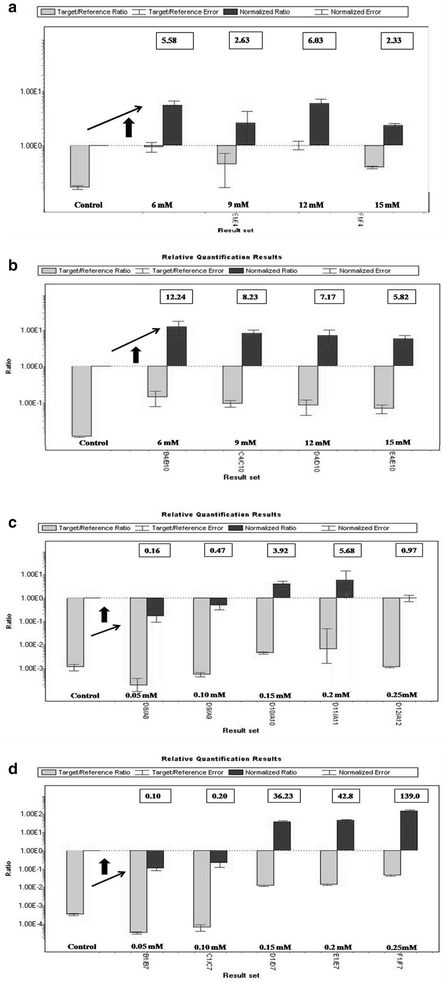

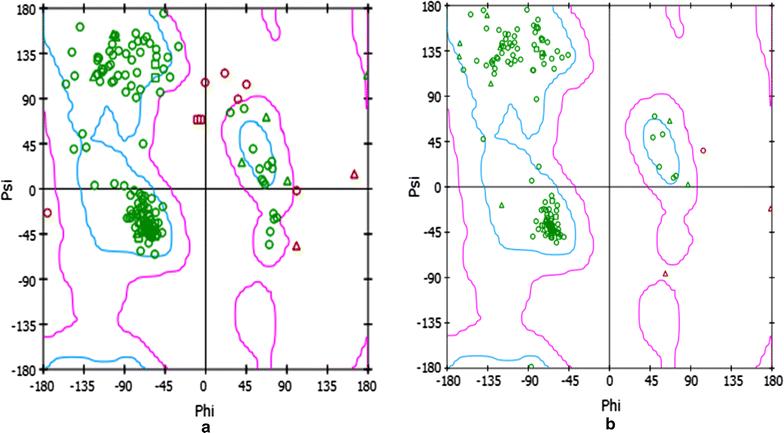
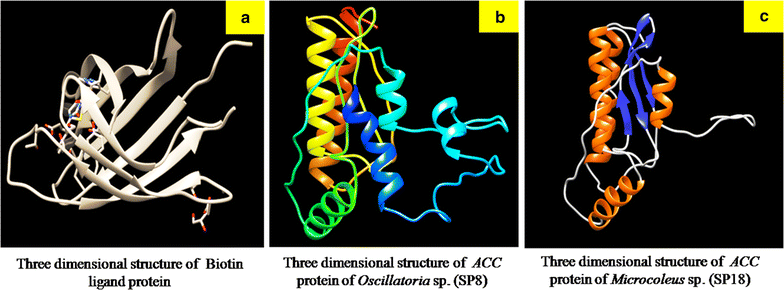
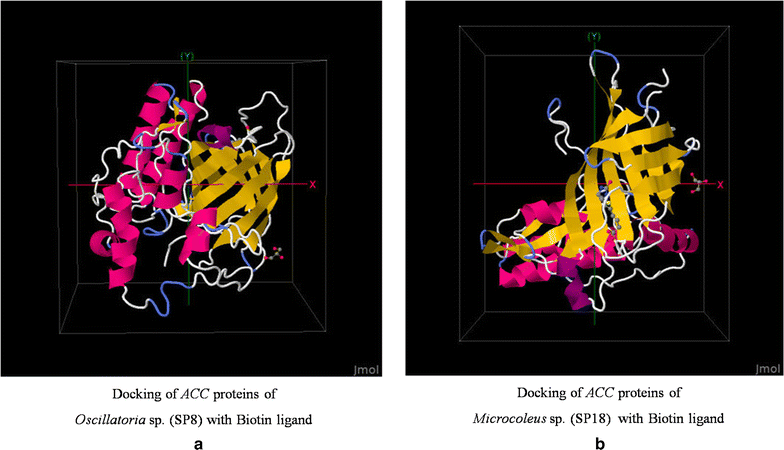
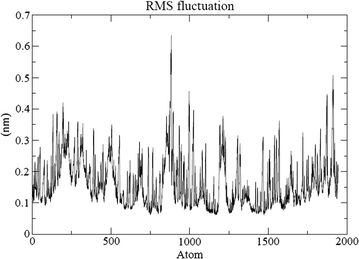
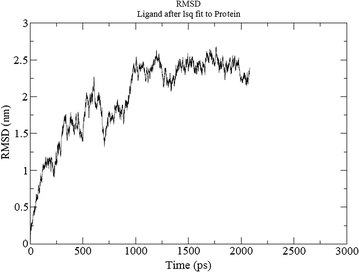
Similar articles
-
Appraising the phycoremediation potential of cyanobacterial strains Phormidium and Oscillatoria for nutrient removal from textile wastewater (TWW) and synchronized biodiesel production from TWW-tolerant biomass.Environ Res. 2024 Jan 15;241:117628. doi: 10.1016/j.envres.2023.117628. Epub 2023 Nov 11. Environ Res. 2024. PMID: 37956756
-
Influence of salinity, nitrogen and phosphorus concentrations on the physiological and biochemical characteristics of two Chlorophyceae isolated from Fez freshwater, Morocco.Sci Rep. 2024 Apr 9;14(1):8259. doi: 10.1038/s41598-024-58864-4. Sci Rep. 2024. PMID: 38589560 Free PMC article.
-
Lipid content, biomass density, fatty acid as selection markers for evaluating the suitability of four fast growing cyanobacterial strains for biodiesel production.Bioresour Technol. 2021 Apr;325:124654. doi: 10.1016/j.biortech.2020.124654. Epub 2021 Jan 4. Bioresour Technol. 2021. PMID: 33461123
-
Nitrogen and phosphorus stress as a tool to induce lipid production in microalgae.Microb Cell Fact. 2023 Nov 20;22(1):239. doi: 10.1186/s12934-023-02244-6. Microb Cell Fact. 2023. PMID: 37981666 Free PMC article. Review.
-
Microalgal and cyanobacterial cultivation: the supply of nutrients.Water Res. 2014 Nov 15;65:186-202. doi: 10.1016/j.watres.2014.07.025. Epub 2014 Jul 25. Water Res. 2014. PMID: 25113948 Review.
Cited by
-
Proteomic approaches in microalgae: perspectives and applications.3 Biotech. 2017 Jul;7(3):197. doi: 10.1007/s13205-017-0831-5. Epub 2017 Jun 30. 3 Biotech. 2017. PMID: 28667637 Free PMC article. Review.
-
Molecular Analysis of Disease-Responsive Genes Revealing the Resistance Potential Against Fusarium Wilt (Fusarium udum Butler) Dependent on Genotype Variability in the Leguminous Crop Pigeonpea.Front Genet. 2020 Aug 20;11:862. doi: 10.3389/fgene.2020.00862. eCollection 2020. Front Genet. 2020. PMID: 32973868 Free PMC article.
-
Waste biorefinery towards a sustainable circular bioeconomy: a solution to global issues.Biotechnol Biofuels. 2021 Apr 7;14(1):87. doi: 10.1186/s13068-021-01939-5. Biotechnol Biofuels. 2021. PMID: 33827663 Free PMC article. Review.
-
Lipid Production by Rhodotorula glutinis in Continuous Cultivation with a Gravity Sedimentation System.Indian J Microbiol. 2020 Jun;60(2):246-250. doi: 10.1007/s12088-019-00849-3. Epub 2019 Dec 9. Indian J Microbiol. 2020. PMID: 32255857 Free PMC article.
-
Functional assembly of surface microbiota of Ulva fasciata improves nutrient absorption efficiency and growth.Front Microbiol. 2024 Dec 3;15:1476073. doi: 10.3389/fmicb.2024.1476073. eCollection 2024. Front Microbiol. 2024. PMID: 39691909 Free PMC article.
References
-
- Montefrio MJ, Xinwen T, Obbard JP. Recovery and pre-treatment of fats, oil and grease from grease interceptors for biodiesel production. Appl Energy. 2010;87:3155–3161. doi: 10.1016/j.apenergy.2010.04.011. - DOI
-
- Alcantara R, Amores J, Canoira LT, Fidalgo E, Franco MJ, Navarro A. Catalytic production of biodiesel from soy-bean oil, used frying oil and tallow. Biomass Bioenergy. 2000;18:515–527. doi: 10.1016/S0961-9534(00)00014-3. - DOI
-
- Becker K, Francis G. Biodiesel from Jatropha plantations on degraded land. A brief technical report. University of Hohenheim, Stuttgrart. 2002.
-
- Ghadge SV, Raheman H. Biodiesel production from mahua (Madhuca indica) oil having high free fatty acids. Biomass Bioenergy. 2005;28(6):601–605. doi: 10.1016/j.biombioe.2004.11.009. - DOI
LinkOut - more resources
Full Text Sources
Other Literature Sources

